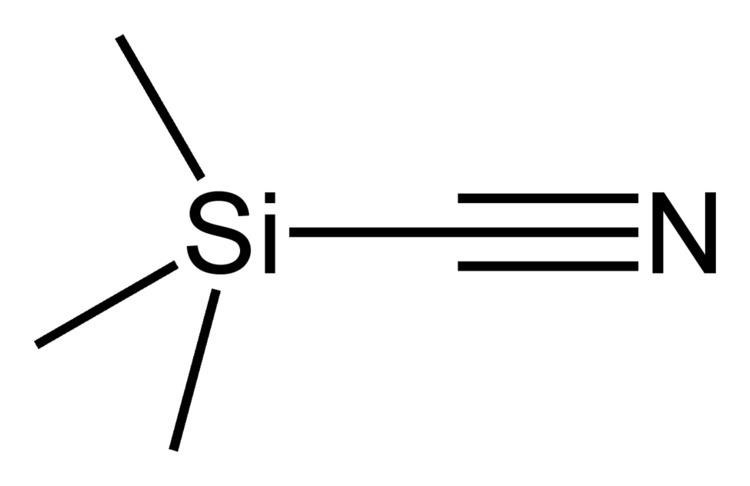Abbreviations TMSCN | Density 793 kg/m³ | |
 | ||
Trimethylsilyl cyanide is the chemical compound with the formula (CH3)3SiCN. This volatile liquid consists of a cyanide group, that is CN, attached to a trimethylsilyl group. The molecule is used in organic synthesis as the equivalent of hydrogen cyanide. It is prepared by the reaction of lithium cyanide and trimethylsilyl chloride:
Contents
LiCN + (CH3)3SiCl → (CH3)3SiCN + LiClStructure
The molecule exhibits the expected structure of a nitrile-like compound. The compound exists in a facile equilibrium with a small amount of the isomeric isocyanide (CH3)3SiNC. By contrast, the nearly isostructural tert-butylnitrile does not readily isomerize to tert-butyl isocyanide.
Reactions
Trimethylsilyl cyanide hydrolyzes to give hydrogen cyanide:
(CH3)3SiCN + H2O → (CH3)3SiOH + HCNIn its principal application, it adds across carbon-oxygen double bonds, for example in an aldehyde:
RCHO + (CH3)3SiCN → RCH(CN)OSi(CH3)3The product is an O-silylated cyanohydrin.
One use of this reagent is to convert pyridine-N-oxides into 2-cyanopyridine. This transformation is best done in dichloromethane solution using dimethylcarbamoyl chloride as the activating electrophile. It is possible to use benzoyl chloride but the yields and regioselectivity of the addition of the cyano group are lower.
Safety
This chemical is hazardous as it hydrolyzes in moist air to give hydrogen cyanide gas.
